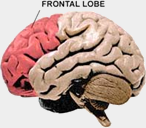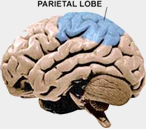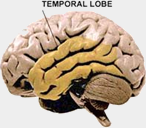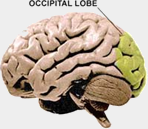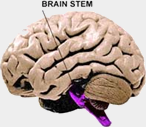~(click here) TRAUMATIC BRAIN INJURY SURVIVAL GUIDE
I am lucky enough to have received a copy of this TBI Guide for my own usage. I cannot begin to tell you how valuable this resource is to me. I was able to find a copy of it online and am very pleased to be able to make it available to all of you.
This guide is written in plain language and easy enough for the brain injured patient to read, enabling them to better understand that they are not alone in some of their thoughts, actions, feelings, or behaviours.
It is vitally important that all caregivers, family members, friends, or co-workers read this to become better equipped to know that everything the brain injury victim is experiencing or exhibiting is "Normal".
If you have a printer readily available, I encourage you to print off the pages that are most able to explain your experiences, and highlight and make notes for your physicians/therapists.
It is good practice to keep a notebook or day-planner handy to write down questions or behaviours/symptoms as they occur, as this information may become very urgent down the road to recovery.
~Be sure to keep concise and detailed journals, complete with the date and time of the
"incident", what happened right before that may have triggered it, and what happened afterwards.
~Ask the
'patient' to explain in his/her own words what they remember their experience to be, and make a detailed report of that also.
It is also important that the 'patient' participate (if possible) in the daily documentation of their own thoughts, feelings, and concerns, etc, enabling the physicians and therapists involved to reach a concise understanding of what the patient is able to comprehend of their day-to-day experiences. It can be referred back to and compared to your own daily notes.
I cannot stress this enough, as you never know how important this information may become further down the road to recovery, especially if legal action needs to be taken, or if the insurance company needs to know this.
This information can make all the difference in the world to your future financial needs, as well as treatment plan and goals.
I hope you find this guide as beneficial as I have.
Sincerely, Melissa
~~~~~~~~~~~~~~~~~~~~~~~~~~~~~~~~~~~~~~~~~~~~~~~~~~
~The Following is Copied from the Introductory Page:
TRAUMATIC BRAIN INJURY
SURVIVAL GUIDE
by
Dr. Glen Johnson
Clinical Neuropsychologist By Dr. Glen Johnson, Clinical Neuropsychologist
5123 North Royal Drive, Traverse City, MI 49684
Phone 231-929-7358, Email debglen@yahoo.com
Website http://www.tbiguide.com/
Copyright ©2010 Dr. Glen Johnson. All Rights Reserved.
ABOUT THIS BOOK
Nearly all of the survivors of a traumatic head injury and their families with whom I have worked have had one complaint: There is nothing written that explains head injury in clear, easy to understand language. Most say the available material is too medical or too difficult to read. The goal of this online book is to better prepare the head injured person and family for the long road ahead.
LIST OF CONTENTS: (click each link below for more information)
Common Indicators of a Head Injury
How the Brain is Hurt
Understanding How the Brain Works
Coping with Common Problems:
Dealing with Doctors
Family Members: What You Can Do In the Hospital Setting
Seizures
Emotional Stages of Recovery
Returning to School
When Will I Get Better?
Who Are All These Professionals?
Related Links
Download the Book
~A word from the Doctor/Author:
PUBLICATION HISTORY
"This online book came from materials that I wrote for my patients and their family members. I basically used a copy machine and gave copies away for free. This book became very popular and over a thousand copies have been given out. It costs about $6 to copy the book another $3 to $4 to mail to people. The costs and time to send the books got out of hand. I decided not to publish the book. Few people would have access to the material and I would not be able to "update" or improve the material easily. Using the Internet, anyone with a computer could access this information. It is my sincere hope that the Internet version of my book would help the greatest number of people. Go to each chapter heading and click on it. Use your web browser to print any information that you find helpful. There is no charge for the information you copy.
INTERNET PUBLISHING COSTS
I need your help. If any of this information is helpful to you, I am asking for a small donation. Developing this site (I have to pay someone to design the web page), monthly charges, and adding new information is costly. If you have $5 (cash or check in US currency), send it to me at the above address. Don’t have $5, even $2 would help. If a miracle happens and this online book becomes a success, it will encourage other professionals to provide similar services. It’s up to you to encourage or discourage this type of service for people with a head injury. If you don’t have money to send, no problem. I just hope this book helps you.
LECTURES
If time permits, I do lecture to head injury groups. If this web site generates addition money beyond my costs, I would be willing to use additional funds to cover my travel expenses for lectures. E-mail me at debglen@yahoo.com if you are interested."

